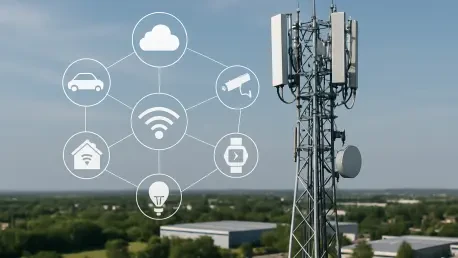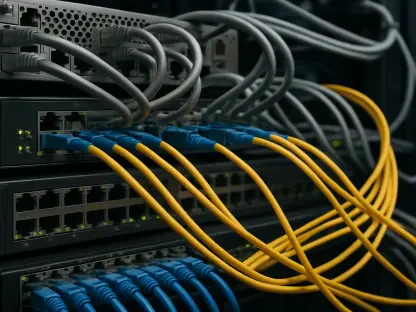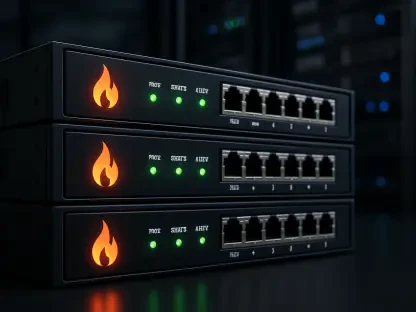As the world becomes increasingly connected, the demand for faster, more reliable, and highly customizable wireless networks has never been greater, pushing the boundaries of what 5G technology can achieve with remarkable innovation. Imagine a future where autonomous vehicles communicate seamlessly with traffic systems in real time, or where remote surgeries are performed with zero delays across continents, transforming how we live and work. These scenarios hinge on the transformative potential of 5G, but achieving such feats requires more than just infrastructure expansion. A strategic blend of cutting-edge technologies is essential to unlock the ultra-low latency, massive connectivity, and unprecedented speeds that industries crave. This article delves into the pivotal roles of network slicing and smart antennas, exploring how their synergy is reshaping the landscape of wireless connectivity. By addressing diverse industry needs and overcoming technical challenges, these innovations are setting the stage for a new era of communication that promises to redefine how society operates.
Unlocking 5G Potential Through Strategic Technologies
The Power of Intelligent Network Automation
The foundation of 5G optimization lies in intelligent automation, a critical driver for operational efficiency in modern networks. This technology enables dynamic resource allocation, ensuring that bandwidth and computing power are directed precisely where they are needed most. By automating complex processes, service providers can reduce human error, cut operational costs, and respond swiftly to fluctuating demands. For instance, during peak usage times in urban centers, automation can prioritize connectivity for critical applications like emergency services over less urgent data streams. This adaptability is vital in a world where network demands vary drastically across different sectors and regions. Moreover, intelligent automation supports predictive maintenance, identifying potential issues before they disrupt service. As 5G networks grow in complexity, such proactive measures become indispensable for maintaining reliability and performance at scale, ensuring that the infrastructure can support a wide array of innovative applications.
Beyond operational benefits, intelligent automation also paves the way for seamless integration with other 5G technologies. It acts as the backbone for coordinating network slicing and multi-access edge computing (MEC), ensuring that these elements function cohesively to deliver tailored connectivity. This synergy allows networks to adapt in real time to the specific requirements of diverse use cases, from high-bandwidth media streaming to low-latency industrial automation. The ability to orchestrate resources dynamically means that service providers can offer customized solutions without compromising overall network stability. Additionally, automation facilitates data-driven decision-making by analyzing usage patterns and optimizing configurations accordingly. This level of precision is particularly crucial in scenarios where split-second decisions are necessary, such as in autonomous driving systems. By laying a robust foundation, intelligent automation ensures that 5G networks are not just faster, but also smarter and more responsive to the evolving needs of society.
Harnessing Multi-Access Edge Computing for Low Latency
Multi-access edge computing (MEC) represents a paradigm shift in how data is processed within 5G networks, bringing computation closer to the end user. By decentralizing data processing and placing it at the network edge, MEC drastically reduces latency, a critical factor for applications requiring real-time responses. Think of scenarios like augmented reality in retail or remote-controlled machinery in manufacturing—delays of even milliseconds can disrupt functionality or safety. MEC addresses this by minimizing the distance data must travel, ensuring near-instantaneous communication between devices and servers. This localized approach also alleviates congestion on core networks, allowing them to handle broader traffic more efficiently. As industries increasingly rely on time-sensitive applications, the role of MEC in 5G optimization becomes non-negotiable, providing the speed and reliability needed to support cutting-edge innovations across multiple domains.
Furthermore, MEC enhances security and privacy by keeping sensitive data closer to its source rather than transmitting it across vast distances to centralized cloud servers. This is particularly relevant for sectors like healthcare, where patient information must be protected during telemedicine sessions or remote monitoring. By processing data locally, MEC reduces exposure to potential breaches during transit, offering an additional layer of safeguarding. It also supports scalability, as edge nodes can be deployed incrementally to meet growing demand without overhauling the entire network infrastructure. This flexibility is key for accommodating the diverse needs of urban and rural environments alike, ensuring equitable access to high-speed connectivity. As 5G adoption accelerates, MEC stands out as a cornerstone for enabling low-latency, secure, and scalable solutions that cater to the unique challenges faced by different industries, paving the way for transformative advancements.
Synergy of Logical and Physical Network Innovations
Custom Connectivity Through Dynamic Network Slicing
Dynamic network slicing emerges as a game-changer in 5G optimization, allowing for the creation of virtual, customized networks tailored to specific use cases. This logical segmentation means that a single physical network can support multiple isolated slices, each with distinct performance characteristics. For example, a slice dedicated to autonomous vehicles might prioritize ultra-low latency and high reliability, while another for video streaming focuses on maximum bandwidth. Such flexibility ensures that diverse industries—from healthcare to entertainment—receive connectivity solutions that align precisely with their operational needs. Network slicing eliminates the one-size-fits-all approach of previous generations, enabling service providers to optimize resources efficiently. This adaptability is crucial in an era where applications demand vastly different network behaviors, making slicing an essential tool for unlocking the full spectrum of 5G capabilities.
The impact of network slicing extends beyond customization to foster innovation across verticals by supporting specialized applications. In manufacturing, for instance, smart factories can leverage dedicated slices for real-time monitoring and control of robotic systems, ensuring uninterrupted operations. Similarly, in media, slicing enables high-definition live streaming without buffering, even during peak usage. This technology also enhances resource efficiency by allocating only the necessary bandwidth and computing power to each slice, reducing waste. Importantly, it allows for rapid deployment of new services, as providers can create and adjust slices without physical infrastructure changes. As industries continue to explore 5G’s potential, network slicing provides the logical framework necessary to meet stringent and varied demands, ensuring that connectivity is not just fast, but also precisely tailored to drive progress in critical sectors.
Enhancing Coverage with Smart Antenna Technologies
Smart antennas, powered by advanced techniques like massive MIMO (Multiple-Input Multiple-Output) and beamforming, serve as the physical backbone of 5G optimization. These technologies enhance signal precision and coverage, ensuring reliable connectivity even in challenging environments like dense urban areas or remote regions. Massive MIMO, for instance, uses multiple antennas to transmit and receive data simultaneously, significantly increasing capacity and efficiency. Beamforming complements this by directing signals toward specific users rather than broadcasting them broadly, reducing interference and boosting performance. This targeted approach is vital for supporting the massive connectivity promised by 5G, enabling countless devices to operate seamlessly on the same network. As a result, smart antennas are indispensable for meeting the growing demand for high-speed, stable connections across diverse settings.
In addition to improving coverage, smart antennas play a pivotal role in enhancing user mobility and network resilience. They adapt dynamically to changing conditions, such as user movement or environmental obstacles, ensuring consistent performance. This adaptability is particularly beneficial for applications like autonomous transportation, where uninterrupted connectivity can mean the difference between safety and disaster. Furthermore, smart antennas contribute to energy efficiency by focusing transmission power only where it is needed, aligning with sustainability goals in telecommunications. Their integration with network slicing ensures that physical and logical optimizations work in harmony, delivering tailored connectivity with robust coverage. As 5G networks expand, the role of smart antennas in overcoming physical barriers and supporting innovative use cases becomes increasingly evident, solidifying their importance in the broader ecosystem of wireless advancements.
Reflecting on Transformative Impacts
Looking back, the strategic integration of network slicing and smart antennas proved to be a defining moment in the evolution of 5G technology. Their combined ability to address both logical customization and physical performance challenges reshaped industries, from enabling smart factories in manufacturing to supporting telemedicine in healthcare. Moving forward, stakeholders must prioritize collaboration between service providers, technology vendors, and regulatory bodies to navigate hurdles like technical limitations and policy constraints. Investment in research and development will be crucial to refine these technologies further, ensuring they scale effectively with global adoption. Additionally, exploring cross-industry partnerships can accelerate the deployment of specialized 5G applications, maximizing societal benefits. As the journey of 5G optimization continues, a proactive approach to innovation and adaptability will remain essential to harness the full promise of next-generation connectivity.









